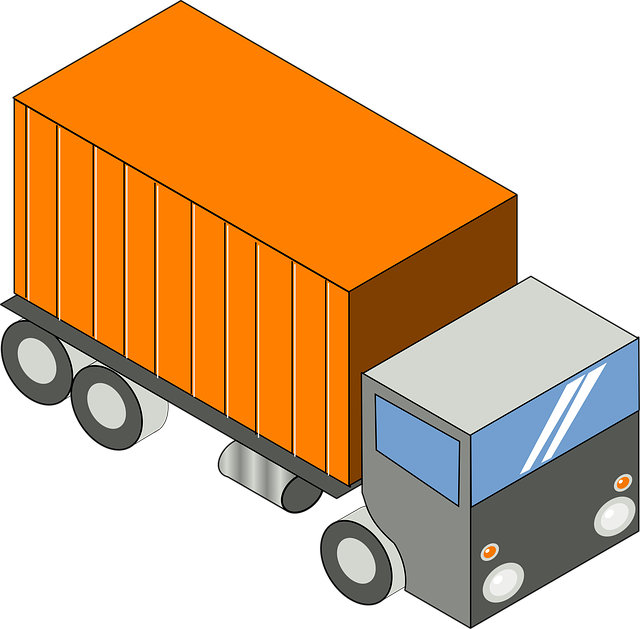Looking to register your car in California? This comprehensive guide walks you through every step, from understanding vital requirements to submitting your application. Discover the importance of a Vehicle Identification Number (VIN) verifier in ensuring accuracy and compliance. Learn about suitable registration classes and fee payment options, and gain the knowledge needed to navigate the process smoothly. By following these steps, you’ll be on your way to securing your vehicle’s registration in California efficiently.
- Understanding California Car Registration Requirements
- Gather Necessary Documents for Vehicle Registration
- Verify VIN: A Crucial Step in the Registration Process
- Choosing an Appropriate Registration Class and Fee Payment
- Submitting Your Application and Receiving Your Registration Documents
Understanding California Car Registration Requirements

Understanding California Car Registration Requirements
In California, car registration is a crucial process that ensures vehicle safety and roadworthiness. Before registering your car, it’s essential to be aware of the state’s specific requirements. One key aspect is ensuring your vehicle meets all emission standards through a valid emissions test certificate. Additionally, you’ll need to provide proof of insurance, a completed registration application, and your vehicle’s Vehicle Identification Number (VIN) for verification. The VIN is a unique 17-character code that acts as the car’s fingerprint, making it easy for officials to check its history.
A mobile VIN inspection or mobile VIN verifier can streamline this process by allowing you to obtain a verified copy of your VIN quickly and conveniently. This digital service ensures accuracy and saves time, especially when combined with other necessary documents. By adhering to these requirements, California car owners contribute to a safer driving environment and smooth registration processes.
Gather Necessary Documents for Vehicle Registration

Before you start the registration process, ensure you have all the essential documents ready. The key document required is the Vehicle Identification Number (VIN) verifier or certificate, which can usually be obtained from the vehicle’s manufacturer. This unique 17-character code is a crucial identifier for your car and must match the details in the title or bill of sale.
Additionally, gather other necessary paperwork such as proof of insurance, a valid driver’s license, and any previous registration documents. For added convenience, consider using a mobile VIN verifier to quickly verify the vehicle’s history and ensure all details are accurate before heading to the California Department of Motor Vehicles (DMV) office.
Verify VIN: A Crucial Step in the Registration Process

Verifying your vehicle’s VIN (Vehicle Identification Number) is a crucial step in the car registration process in California. This unique 17-character code acts as a fingerprint for your vehicle, providing essential information about its make, model, and year. To ensure accuracy, it’s recommended to use a reliable vin verifier. You can opt for a mobile vin verification service or even conduct a simple online check using official resources provided by the California Department of Motor Vehicles (DMV).
A mobile vin inspection is convenient as it allows you to complete this task from the comfort of your home or even while you’re on the go. This method streamlines the registration process, ensuring that all details associated with your car are up-to-date and accurate before submitting your application to the DMV.
Choosing an Appropriate Registration Class and Fee Payment

Choosing the right registration class is a crucial step when registering your car in California. The state categorizes vehicles into several classes based on factors like age, type, and use. As an owner, you need to select the one that aligns with your vehicle’s characteristics. For instance, classic or antique cars may qualify for different registration requirements compared to new models.
Fee payment is another essential aspect. California charges fees that vary depending on the vehicle class and other factors like whether you’re registering a new or used car. Additionally, services like mobile VIN verification or mobile VIN inspection can streamline the process, offering convenience by allowing you to complete these steps from the comfort of your home or office. These modern solutions, utilizing advanced technology, ensure accurate and efficient vehicle identification through your Vehicle Identification Number (VIN).
Submitting Your Application and Receiving Your Registration Documents

After completing your application for car registration, it’s time to submit all required documents to the California Department of Motor Vehicles (DMV). This process typically involves both online and in-person elements. First, make sure to double-check that you’ve included every necessary piece of paperwork, such as proof of ownership, identification, and insurance. Once everything is in order, you can take your application and supporting documents to a local DMV office or submit them online through the official state portal.
The DMV will verify all information provided, including conducting a VIN inspection using advanced tools like a mobile VIN verifier. This step ensures that your vehicle’s identification number (VIN) is accurate and matches the data in their systems. Upon successful verification, you’ll receive your registration documents in the mail. Keep these documents secure, as they serve as legal proof of your vehicle’s registration and are essential for future transactions or interactions with law enforcement.
Registering a car in California involves understanding key requirements, gathering essential documents, verifying your vehicle’s VIN (using a reliable VIN verifier), selecting the right registration class, and submitting your application. By adhering to these steps, you’ll ensure a smooth process, allowing you to hit the road legally and confidently. Remember, proper registration not only complies with state laws but also protects your investment and facilitates smoother transactions when selling or transferring vehicles.
